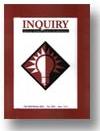Reasoning � PAGE �2�
Reasoning Paper
<Your Name>
<Instructor>
University of Phoenix
<Date>�
Critical thinking is something we all do, although the frequency may vary from person to person. A person must use logic during the critical thinking process. It is important to understand how people think and make the unknown number of decisions everyday. One of the amazing yet confounding things about thinking logically and critically is that all of us perceive issues differently and all of us have a unique thinking pattern. The things that we experience also play an important role in how we perceive issues and also our thinking patterns. The focus of this paper is to discuss the nature of logic as it relates to critical thinking. Also covered will be my own perceptual process and an explanation of the types of blocks that influence my views.
Logic and Critical Thinking
Critical thinking involves understanding of the science of logic, including how to analyze information and the usage of corrective reasoning (Kowalski & Westen, 2005).
One believes the nature of logic is how we each deal with a situation and how we decide what the right thing to do is and how we come to certain conclusions about a situation. We all have had experiences in our life that contribute to what we feel is logical or not logical. Where we grow up and live are elements of the nature of logic and perceptions. Logic is the process of examining and evaluating any particular idea or thought, in an effort to search for the truths that allows us to better understand or identify why we think the way we do. It enables us to more effectively, express our opinions and ideas, or even aid in the argument of someone else's point of view.
Perception
Perception is defined as a conscious sensory experience of the world around us and involves both the recognition of environmental stimuli and actions in response to these stimuli. Environmental stimuli are all the things in our environment that we can potentially perceive. Perception is the way we receive and translate our experiences and how and what we think about them. Our perceptions are learned through personal experiences and socio-cultural conditioning. Through our experiences and being told by others we learn that the sky is blue, water is refreshing, and chocolate is heavenly. We filter information with our perceptions as we select, organize, interpret and subsequently act on information before it has an effect. I suppose this perceptual process is the same process myself and everyone else uses, but we do it without thinking about each step. It all comes very naturally; it is just what we do. We may not know the steps to the perceptual process, but, interestingly enough, we do not need to know each step to be successful at completing the process. The key to thinking critically is applying logic in the process. This can often become challenging as we find it hard to separate our perception from reality.
Perception versus Reality
An individual's personality, values or past knowledge all have an effect on the perceptual process, due to this I think ones' perception cannot have a basis in reality.
A few years ago I won a ticket from a radio show and when I went to pick the ticket up I met the host of the station (Darrow). Upon meeting him, instantly a stereotype was created based on the way he spoke, his general appearance and the way in which he carried himself, because I have heard stories about this individual. He portrayed himself to live in one of the most prestigious areas in Texas, drives the finest vehicles, bragged about his accomplishments, just basically conceited. The immediate perception was that he was a "no-good" who was a womanizer, a thief, and a liar. I assumed a person like this lacked class and didn't have good morals; I thought if I allowed it, he would take advantage of me too. I initially heard he took pride into swindling women to obtain the finer things in life.
Perceptual block is one which prevents you from clearly perceiving the problem itself. The text demonstrates that stereotypes have a powerful effect on our thinking (Kowalski & Westen, 2005). Kowalski and Westen go on to say that it is important to realize that stereotypes are inaccurate (2005).
A stereotype is simply a way to combine information in order to deal with the overload of judgments and information running through the brain at one time. When thinking critically, it became evident that more facts were needed to make a logical determination of the character of this individual who seems to be previously dismissed, by so much people.
As time progressed and there was more interaction between Darrow and me, it became apparent to me that he was being done an injustice. The stereotype placed on him was very wrong as there was much more that meets the eye; he was an intelligent man who had obtained his masters degree, and helped many youths in the community to get an education and stay out of trouble. He had high family values and worked very hard to get to the level he was currently at. He was a very serious business man who helped many individuals to start their business, including myself, and never asked for anything in return. The stereotype that was immediately placed on him had influenced my logic when making a decision as to the value of this individual. Perception was not reality; because stereotypes unconstructively affected my logical thinking process; there was no critical thinking present.
From this situation, I learned that a person should not always rely on their perceptions of what an outcome may be; it is not fair to put labels on people before you have given them a fair opportunity to show what they can do.
Overall, when we look at something from a reality standpoint, we see things for what they really are, without interpretations. As soon as we attach emotions, feelings, thoughts, associations, etc., then we change the reality into our perception. This perception is not reality anymore. Once we see and understand the difference between reality and perception we can communicate effectively with each other.
�
Reference
Kowalski, Robin & Westen, Drew (2005) Psychology John Wiley & Sons, Inc.


